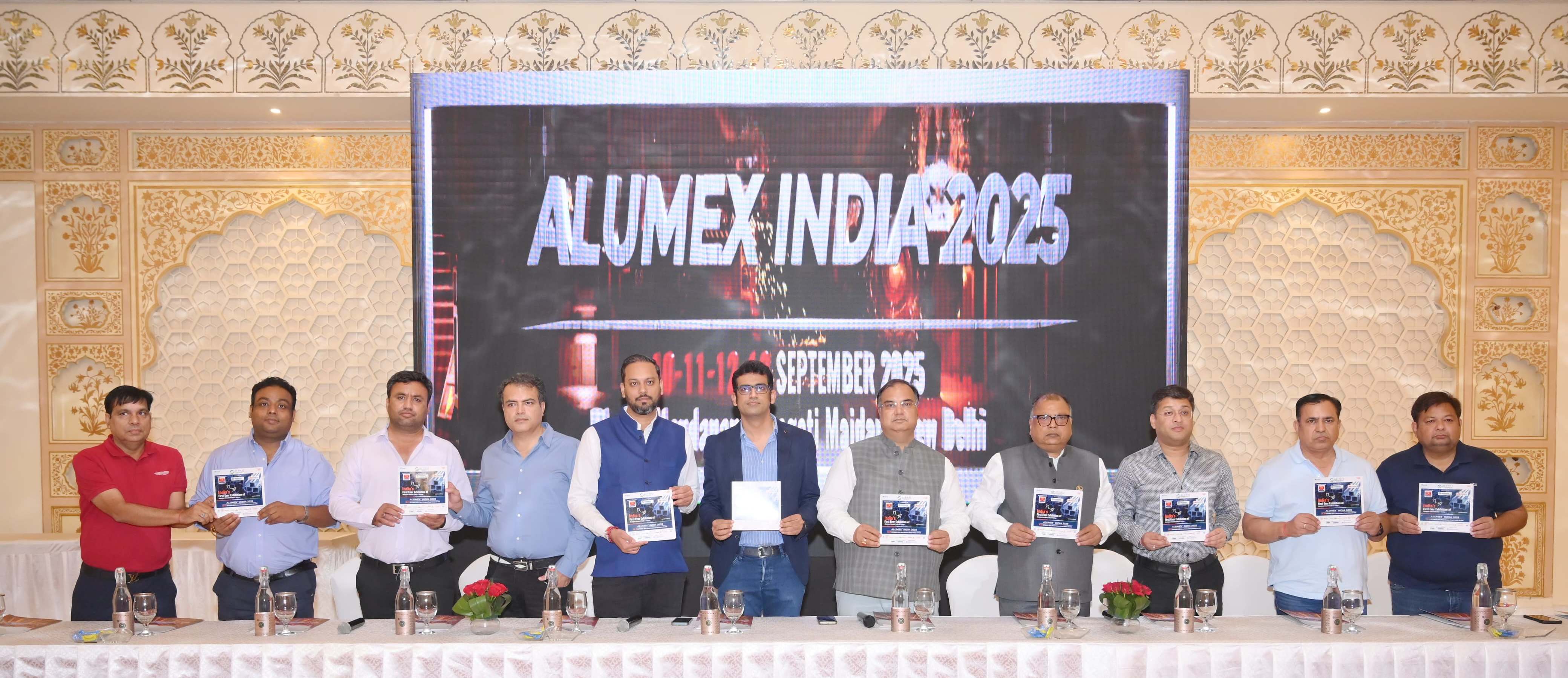
Udaipur : North India, with its expanding industrial hubs and strategic location, has become a cornerstone of India’s aluminium extrusion industry. The fast-growing industrial ecosystem in Delhi-NCR, Rajasthan’s engineering clusters, Haryana’s automobile hubs, and the vibrant real estate sector across UP and MP, are making the region an essential part of the aluminium supply chain.
The region dominates consumption of aluminium extrusions, particularly in the infrastructure, construction and solar panel manufacturing sectors. Within North and Central India, the booming real estate market in Delhi-NCR has created strong demand for architectural profiles for windows, doors, and curtain walls. At the same time, automobile and engineering hubs in Haryana and Rajasthan are driving adoption of lightweight, high-precision extrusions for vehicle components and industrial applications.
Rajasthan, in particular, plays a dual role as a major manufacturing base because of its fast-growing industrial ecosystem in Bhiwadi-Alwar, Jaipur, Jodhpur, Kishangarh, Sikar, and Udaipur and as a distribution centre due to its strategic location, serving markets in Delhi-NCR and beyond. A landmark moment for the state came in 2022 when Jindal Aluminium acquired an extrusion facility in Bhiwadi, adding nearly 14,000 metric tonnes per annum capacity and further strengthening the region’s ability to meet rising demand.
The growing significance of North and Central India will be in focus at ALUMEX India 2025, organised by the Aluminium Extrusion Manufacturers Association of India (ALEMAI). India’s first and only dedicated aluminium extrusion platform, the expo will be held in New Delhi from September 10 to 13, featuring over 200 exhibitors and more than 12,000 business visitors from across the aluminium value chain.
Jitendra Chopra, President of ALEMAI, said, “North India is the biggest manufacturer and market for aluminium extrusion industry in India. The region is well placed to serve both domestic and international markets. Through ALUMEX India 2025, we aim to highlight North India’s strengths, create opportunities for collaboration, and address the challenges facing the sector.”
Despite its growth potential, the aluminium extrusion industry faces pressing challenges. Despite being the world’s third-largest aluminium producer with its own bauxite reserves, raw material prices are highly volatile. Domestic MSMEs, which form the backbone of the industry, are struggling under the pressure of Free Trade Agreement (FTA) concessions, cheap imports from China and ASEAN countries such as Vietnam, Malaysia, Indonesia and Cambodia. US tariff issues have further compounded the strain.
As a result, as against India’s total installed aluminium extrusion capacity of 3.5 million tonnes per annum, the utilisation is only around two million tonnes, with the remaining 1.5 million tonnes being met through imports.
“The need of the hour is policy safeguards to ensure full utilisation of the domestic manufacturing capacity. MSMEs in particular require support against unfair imports so they can remain competitive. For the industry to thrive, there needs to be balance between open trade and protecting local industry and jobs,” Mr. Chopra added.
ALUMEX India 2025 will provide a platform to discuss these challenges and chart the way forward. It will have dedicated sessions on technology localisation, government support for MSMEs, and global demand trends. With participation from global players and leading Indian firms, ALUMEX India 2025 aims to strengthen the aluminium extrusion ecosystem and position India as a global manufacturing leader.
The event is supported by Hindalco, Vedanta, and JNARDDC (an autonomous body under the Ministry of Mines), and the Ministry of MSMEs.